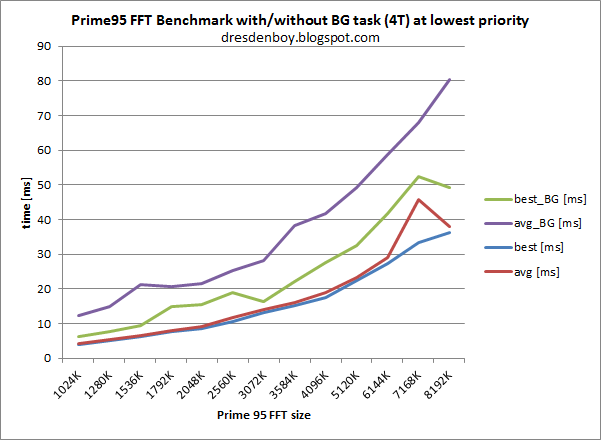- Aug 25, 2001
- 56,582
- 10,221
- 126
I've been noticing, crunching on BOINC on three threads, and on my GT740 GPU, I'm getting pauses. While it could be the GPU, I don't think so, because scrolling is unaffected. But things like minimizing windows (with the corresponding semi-transparent shrinking animation) are lagging.
This doesn't happen on my G4400 dual-core OCed to 4.455Ghz, with my 7950 card, also crunching on both CPU cores and GPU.
Here's a theory. The i3 really only offers "half threads". Meaning, that on my G4400, when my UI thread needs attention from the scheduler, because the BOINC task CPU threads are running at a low priority, they get out of the way, and the UI task gets full core performance to execute its task.
On an i3, since the cores are shared by "half-threads", then when I have a UI task thread scheduled, it causes the current BOINC "half-thread" to get out of the way, but the OTHER BOINC half-thread, which is optimized so it doesn't leave much in the way of execution resources free, is still executing on the core.
Therefore, the user-perception is affected, because the UI task thread doesn't execute in as timely a manner as it would have, had the PC only had two FULL cores, rather TWO cores with four "half threads".
My observational conclusion is, that using a HyperThreaded PC, results in a DEGRADED user experience.
This doesn't happen on my G4400 dual-core OCed to 4.455Ghz, with my 7950 card, also crunching on both CPU cores and GPU.
Here's a theory. The i3 really only offers "half threads". Meaning, that on my G4400, when my UI thread needs attention from the scheduler, because the BOINC task CPU threads are running at a low priority, they get out of the way, and the UI task gets full core performance to execute its task.
On an i3, since the cores are shared by "half-threads", then when I have a UI task thread scheduled, it causes the current BOINC "half-thread" to get out of the way, but the OTHER BOINC half-thread, which is optimized so it doesn't leave much in the way of execution resources free, is still executing on the core.
Therefore, the user-perception is affected, because the UI task thread doesn't execute in as timely a manner as it would have, had the PC only had two FULL cores, rather TWO cores with four "half threads".
My observational conclusion is, that using a HyperThreaded PC, results in a DEGRADED user experience.



